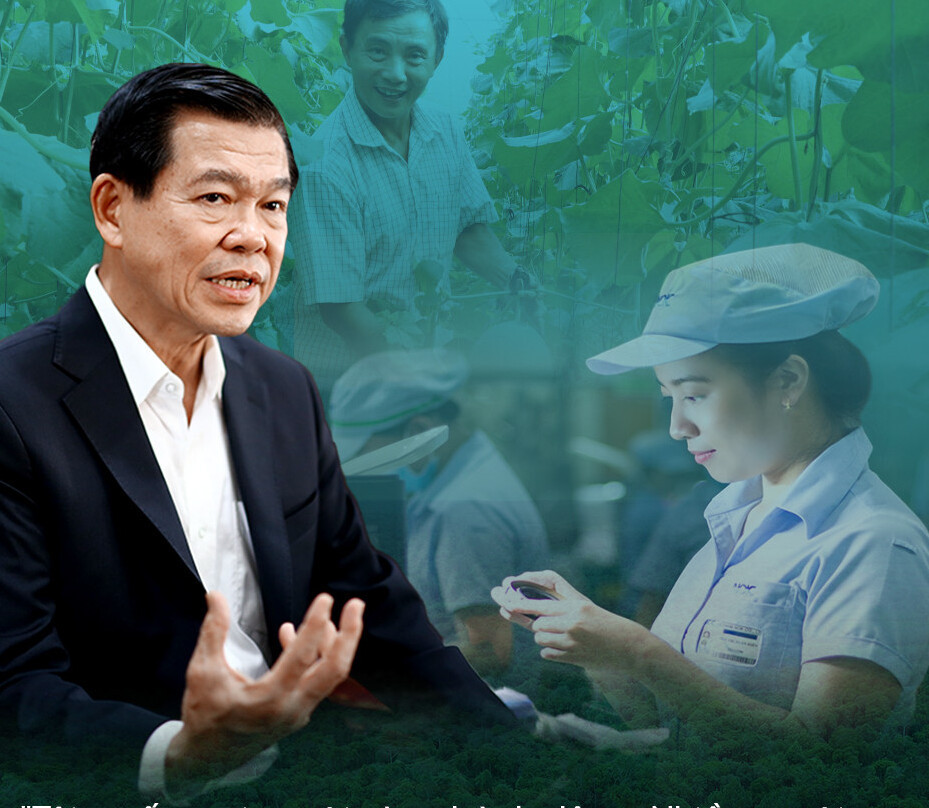
Talking with VietNamNet, Linh shared his knowledge about the path towards net zero emissions. He stressed that thanks to COP26 and the government’s strong determination, Dong Nai has more motivation to carry out the transition and strive for sustainable development.
Dong Nai approved a carbon mitigation plan in the province to 2030 just after a short time of preparation. What prompted Dong Nai to pioneer in this new field?
It is true that net zero emissions remains an unfamiliar concept in Vietnam. But this has been implemented in developed countries since the 1990s. Dong Nai called for support from some experienced countries to create a plan for it.
Many experts, international organizations and foreign enterprises are willing to give advice to the province in setting up carbon credit institutions and assessing the environment, and are willing to accompany us on the path towards sustainable development. They have suggested many solutions, including communications, administration, policies, detailed technical solutions and implementation methods. The assistance has helped us build an overall action plan.
There are at least three partners from Europe and Taiwan (China) cooperating with Dong Nai.
Did the agencies in Dong Nai face difficulties and fear mistakes when creating the plan, since everything was unfamiliar?
The net zero plan bears importance significance. In 10, 20 or 30 years, our descendants will benefit from the reasonable strategy on minimizing emissions. This is a growing tendency in the world and the path we must follow.
It is true that provincial agencies once complained about difficulties. But I told them ‘Do it. Don’t be afraid of making mistakes. We are doing a good deed."
We plant more trees, we count forests, we count activities that have environmental value, and we count activities that harm the environment. We encourage good actions and minimize bad actions so that we cannot be wrong.
At present, many people and enterprises still don’t understand which activities will increase emissions and what they need to do to mitigate emissions. They don’t have understanding about the clearance mechanism and the issues related to benefits associated with green growth.
Therefore, Dong Nai has organized a conference to heighten awareness about green development for enterprises, managerial officers and the community.
As far as I know, some enterprises have shifted to green production. Could you please tell us about this?
Many businesses are well aware of going green. There are Industrial Zones which have followed the ecological development model in accordance with the government’s decree 35 from the very beginning. Meanwhile, existing IZs need time for transition.
The enterprises in high-emission heavy industries such as plastics, steel and cement manufacturing, and the aviation sector have also activated programs on minimizing emissions. They have to buy carbon credits to offset the carbon volume emitted.
For example, the industrial enterprises producing emissions higher than the norm equivalent to 1,000 tons of carbon, will have to spend money to buy carbon credits to compensate for the excessive carbon volume they emit. This will be fair for the production fields that can absorb carbon such as afforestation and cleaner agricultural production.
The government has set a roadmap for the formation of a carbon credit market, in which institutions and enterprises can buy or sell carbon. In the future, green, sustainable and transparent standards will be required, which means that products which cannot satisfy the requirements won’t be able to exist in the market.
Enterprises have begun shifting to green production. However, it seems that common standards used to calculate emission volume have not been set yet. Do you think this is an obstacle?
Experts will help them better understand the international standards being applied. Ministries will also set regulations that serve the calculation of emission volume for each production field.
In Dong Nai, the provincial department of natural resources and the environment is taking stock of emissions. Meanwhile, enterprises need to get ready for the go-green process.
During the process, enterprises can access foreign institutions that reserve budgets for green growth and green production.
What are your expectations when Dong Nai implements the plan tp 2030 on mitigating carbon?
Dong Nai has the largest natural forests among southern provinces, which could be a big source of carbon credits for compensating for emissions from enterprises.
There are too many industrial zones and industrial enterprises in Dong Nai. Therefore, we need to take action immediately and drastically to contribute to the country’s plan on reducing emissions to zero percent.
Tam An - Hien Anh - Hoang Anh